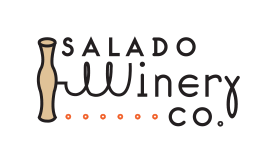Practice Makes Perfect….
In my short time with wine, I have had the opportunity to taste some very beautiful wines from all over the world. The amazing thing about wine is that it not only changes with time, but the friends you enjoy it with, the atmosphere or ambiance and even your mood. In other words, it is subject to interpretation and if you say peaches and I say apricots or you say raisins and I say plum, no one is wrong. Sure there are connoisseurs like Robert Parker whose palate is amazing almost to a fault, but the bottom line, is that if you like it, you like it and no need for further explanation. That being said, wine enjoyers can train their palates to recognize a wider variety of aromas and flavors…ultimately enhancing the entire wine drinking experience! Practice does make perfect!
Please note, Texas wines will absolutely awaken new taste buds for you! I am already spoiled here, as June works very hard on her palate and tasting so that she can bring you the very best Texas has to offer. Salado Wine Seller is the coolest one-stop-shop to get a good palate workout! Drink up and enjoy! Here are some tips to developing and keeping your palate sharp:
How to Develop a Wine Palate
Training your wine palate is not just for professional wine tasters and connoisseurs. In fact, all wine drinkers are training their palates everyday just by experiencing different tastes. A trained wine palate simply means that you can recognize the various flavors that you taste in the wines you consume. The more flavors you can successfully identify, the more trained your palate has become. Ultimately your experience with taste is your wine tasting guide.
Instructions
Step One
See below for a list of flavors common to wine. Write these flavors down in your wine journal.
Step Two
Seek out and purchase a small quantity of each item from your list. Many of the items may be purchased at your local grocery store or specialty mart; however, others may require a trip to a nursery, hardware store or other less conventional store.
Step Three
Taste and smell each of the items you have purchased. Try to recall wines you have previously tasted, which may have had hints or notes of the flavor you are tasting.
Step Four
Repeat this process, adding new items occasionally. This will allow your palate to solidify these tastes.
Step Five
Continue to drink a variety of wine types including wines from different regions and countries. This will allow you numerous opportunities to test your palate against a multitude of flavors.
Step Six
Verbalize your thoughts as you drink different wines. By verbalizing thoughts through dialogue, you may gain further understanding of what you are tasting. You may also record your thoughts in your wine journal.
Tips & Warnings
· Training your palate is like training for anything else, the more you do it, the better you are likely to get at it.
· Wine tasting at wineries and wine stores is a great way to meet people who enjoy talking about wine. Such tastings are also a good way to taste a wide variety of wines without breaking the bank.
· Jams and jellies are good for training your palate to recognize a variety of the fruit flavors you are likely to encounter when wine tasting. When you taste jams and jellies, try to stick with organic or preservative free jams and jellies.
· Palate sensitivity does vary from person to person, so even if you can’t identify every nuance in your favorite wine, remember that wine enjoyment does not come from the knowledge of what you are tasting, but from the pleasure of the taste.
· Don’t wear out your tasters; be sure and keep trying new, non-wine foods and flavors to keep senses sharp.

Trackbacks & Pingbacks
hazelnut coffee…
The TrackBack specification was created by Six Apart, who first implemented it in their Movable Type blogging software in August…
practice makes perfect…
I can’t believe I missed this! I’m going to have to do some more reading me thinks….
[…] Gamestrata | Blog wrote an interesting post today
Comments are closed.